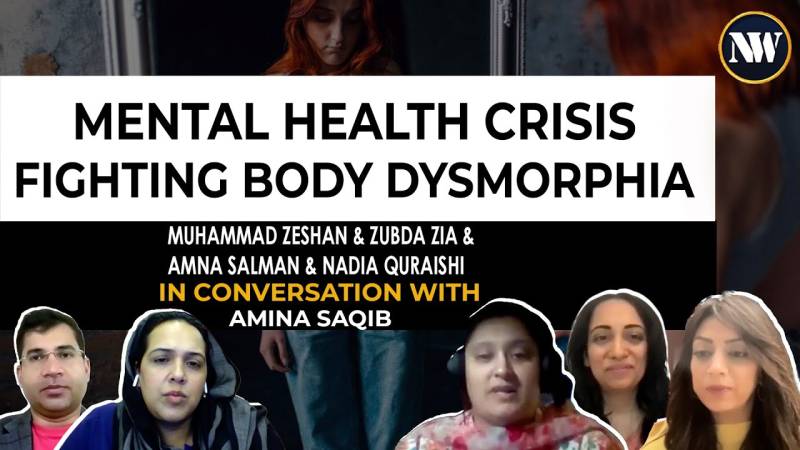Body shaming refers to the act of criticizing or making negative comments about someone's physical appearance, often targeting their size, shape, or other aspects. This harmful behavior can have severe implications on an individual's mental and emotional well-being. Body shaming perpetuates unrealistic beauty standards, leading to low self-esteem, body dissatisfaction, and the development of eating disorders. It also contributes to a culture of judgment and discrimination, impacting individuals of all genders, ages, and backgrounds. To combat body shaming, it is crucial to promote body positivity, acceptance, and respect for diverse bodies, fostering a healthier and more inclusive society for all.
To investigate the causes, realities, and implications of body shaming, Dr. Amina Saqib hosted an enlightening panel with esteemed guests, Dr. Muhammad Zeeshan a child specialist, Nadia Qureshi a holistic nutritionist, Amna Salman a fashion connoisseur, and Ms. Zubda Zia the Head of Department for Economics at Kinnaird College Lahore, Pakistan. The mix of expertise in this panel allows for a deep and encouraging conversation around body shaming, with a particular focus on body dysmorphia amongst adolescents and what the society must change to curb this epidemic.
Dr. Zeeshan shares insights from his clinical practice wherein he deals with children who suffer multiple repercussions of body shaming, which includes not only bullying for obesity but also, height, and skin color. Amongst South Asian children in the West, Dr. Zeeshan explains that there is widespread lack of confidence and self esteem due to an inability to fit into the western mold of attractiveness. He shares that body shaming not only impacts confidence but has more detrimental effects like suicidal ideation and therefore, medical and personal efforts to regain self-compassion are necessary. Ms. Zubda Zia is able to build on Dr. Zeeshan’s insights as she draws on her time at Kinnaird and growing up as a “relatively bigger child”. She explains how her journey from suffering with her weight to becoming confident and accepting of her appearance was entrenched with ideas of self-love and identifying that there are things more important than the exterior.
“I’m happy with my weight and I love food, why should I be made to feel like I’m not accepted in society because I don’t fit in a mold?” - Ms. Zubda Zia
Amna Salman adds to the conversation with a different perspective, as she illuminates the problem of children dancing at weddings and performing in environments with strange men and women which eventually causes them to seek external validation. Nadia Qureshi depicts the reality of social media and how increased accessibility to different content online exposes children to varying molds and standards which they are unable to meet. The conversation therefore has an underlying motive of explaining that such access must be curbed and how.
Ms. Qureshi further explains how social media plays a significant role in the development of body dysmorphia in children. Platforms like Instagram, Facebook, and Snapchat are saturated with edited and filtered images that present an idealized version of beauty. Constant exposure to these unrealistic standards can lead to a distorted perception of one's own body, contributing to body dysmorphia. Comparison with heavily curated and photoshopped images can cause feelings of inadequacy, low self-esteem, and the belief that their bodies are flawed. The pressure to conform to these unrealistic beauty ideals can result in extreme measures, such as excessive exercise, restrictive eating, or even seeking risky cosmetic procedures at a young age. It is crucial to promote media literacy, self-acceptance, and critical thinking to mitigate the negative impact of social media on children's body image.

